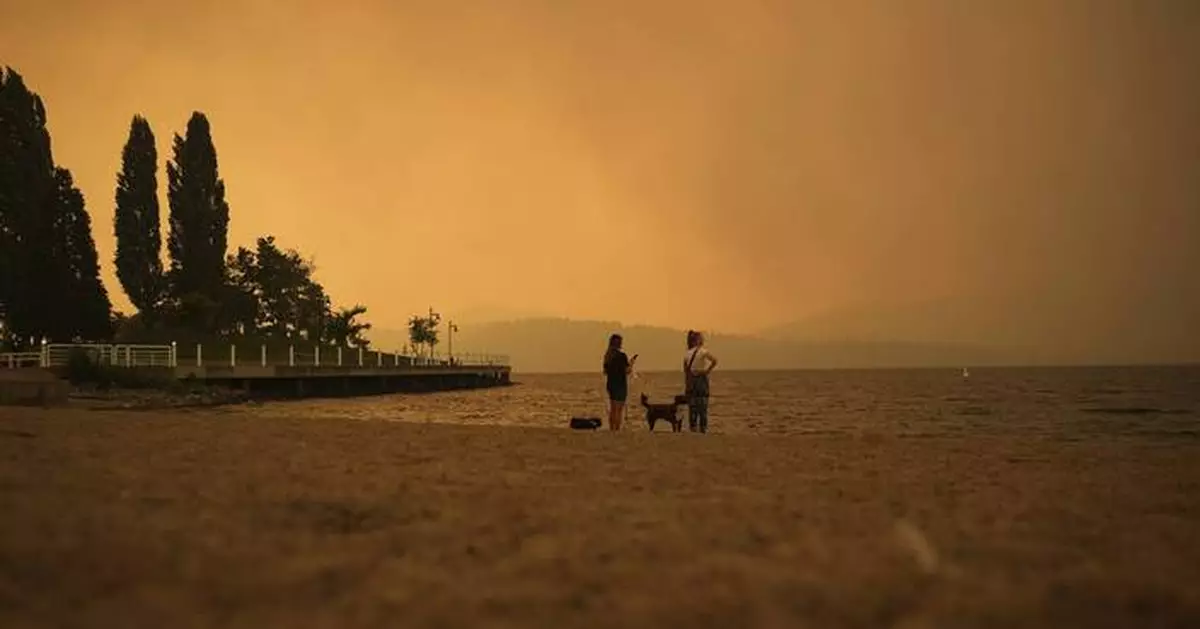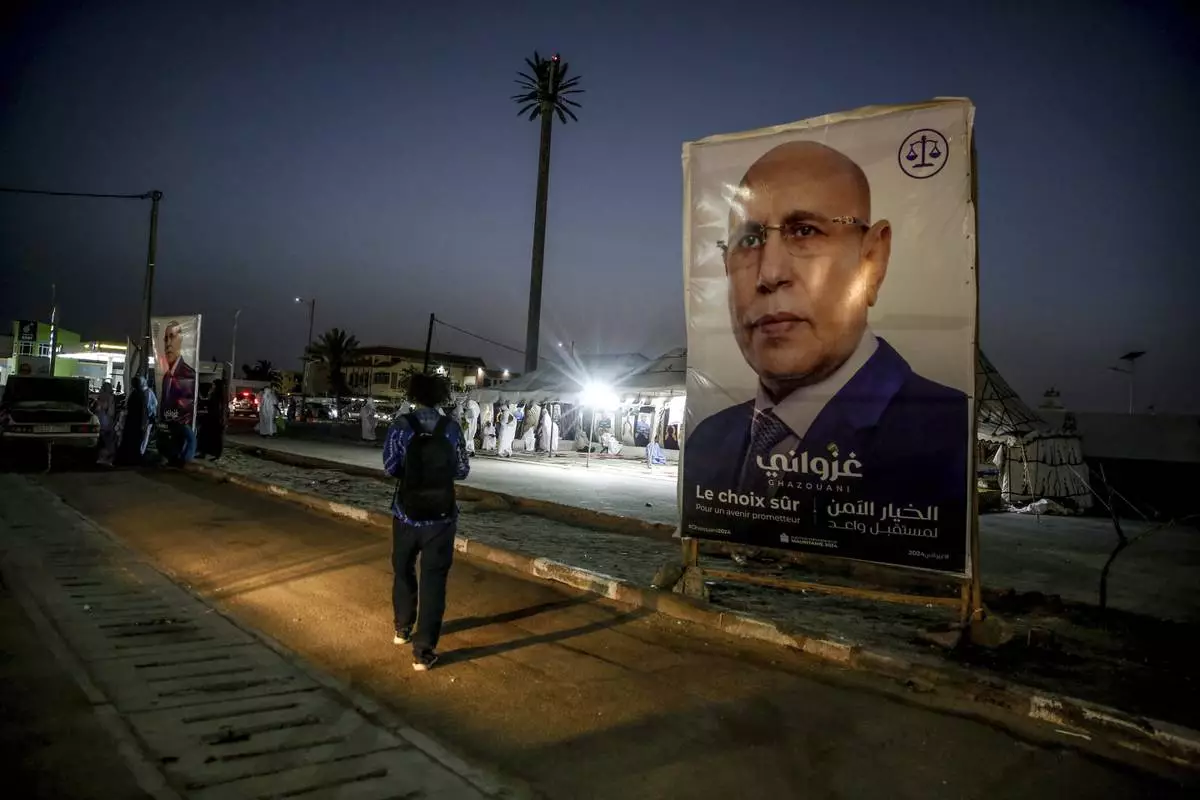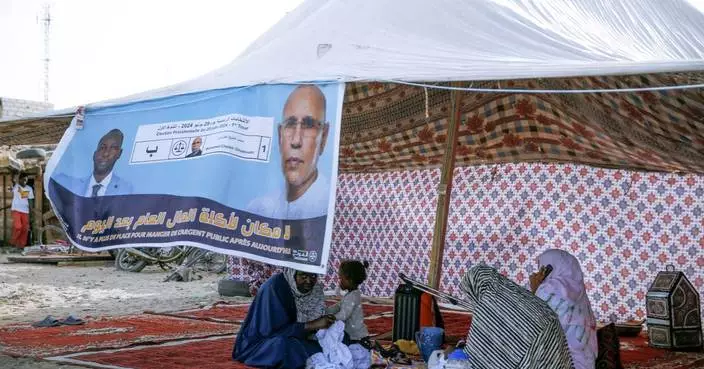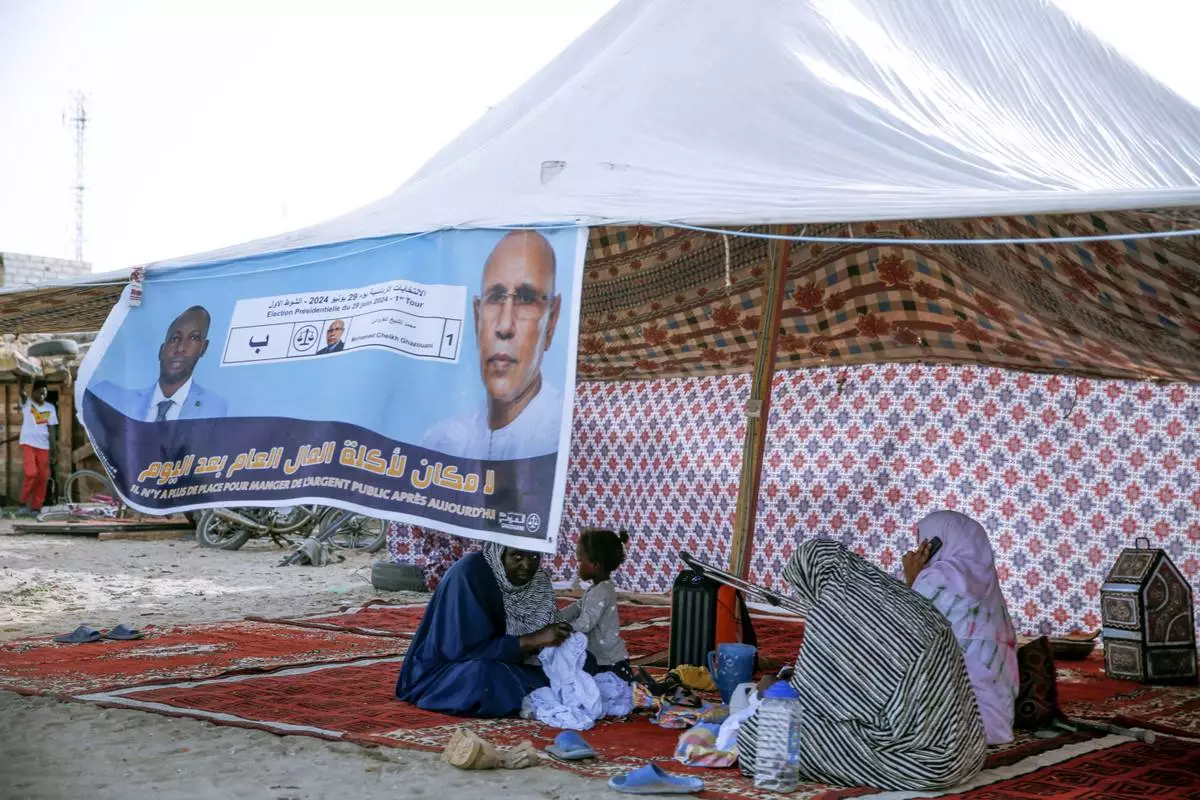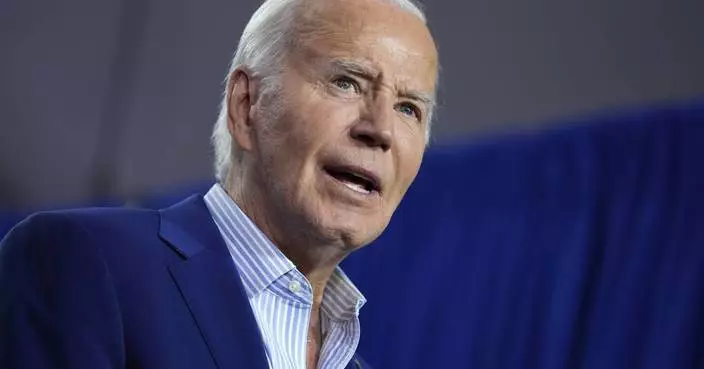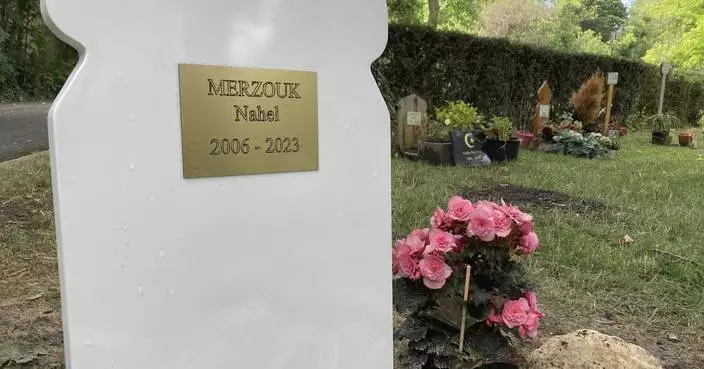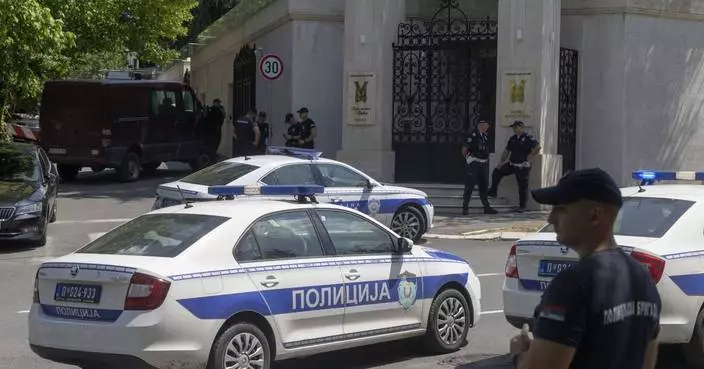WASHINGTON (AP) — Catastrophic Canadian warming-fueled wildfires last year pumped more heat-trapping carbon dioxide into the air than India did by burning fossil fuels, setting ablaze an area of forest larger than West Virginia, new research found.
Scientists at the World Resources Institute and the University of Maryland calculated how devastating the impacts of the months-long fires in Canada in 2023 that sullied the air around large parts of the globe. They figured it put 3.28 billion tons (2.98 billion metric tons) of heat-trapping carbon dioxide into the air, according to a study update published in Thursday's Global Change Biology. The update is not peer-reviewed, but the original study was.
The fire spewed nearly four times the carbon emissions as airplanes do in a year, study authors said. It's about the same amount of carbon dioxide that 647 million cars put in the air in a year, based on U.S. Environmental Protection Agency data.
Forests “remove a lot of carbon from the atmosphere and that gets stored in their branches, their trunks, their leaves and kind of in the ground as well. So when they burn all the carbon that's stored within them gets released back into the atmosphere,” said study lead author James MacCarthy, a research associate with WRI's Global Forest Watch.
When and if trees grow back much of that can be recovered, MacCarthy said, adding “it definitely does have an impact on the global scale in terms of the amount of emissions that were produced in 2023.”
MacCarthy and colleagues calculated that the forest burned totaled 29,951 square miles (77,574 square kilometers), which is six times more than the average from 2001 to 2022. The wildfires in Canada made up 27% of global tree cover loss last year, usually it's closer to 6%, MacCarthy's figures show.
These are far more than regular forest fires, but researchers focused only on tree cover loss, which is a bigger effect, said study co-author Alexandra Tyukavina, a geography professor at the University of Maryland.
“The loss of that much forest is a very big deal, and very worrisome,” said Syracuse University geography and environment professor Jacob Bendix, who wasn't part of the study. “Although the forest will eventually grow back and sequester carbon in doing so, that is a process that will take decades at a minimum, so that there is a quite substantial lag between addition of atmospheric carbon due to wildfire and the eventual removal of at least some of it by the regrowing forest. So, over the course of those decades, the net impact of the fires is a contribution to climate warming.”
It's more than just adding to heat-trapping gases and losing forests, there were health consequences as well, Tyukavina said.
“Because of these catastrophic fires, air quality in populated areas and cities was affected last year,” she said, mentioning New York City's smog-choked summer. More than 200 communities with about 232,000 residents had to be evacuated, according to another not-yet-published or peer-reviewed study by Canadian forest and fire experts.
One of the authors of the Canadian study, fire expert Mike Flannigan at Thompson Rivers University in Kamloops, British Columbia, puts the acreage burned at twice what MacCarthy and Tyukavina do.
“The 2023 fire season in Canada was (an) exceptional year in any time period,” Flannigan, who wasn't part of the WRI study, said in an email. “I expect more fire in our future, but years like 2023 will be rare.”
Flannigan, Bendix, Tyukavina and MacCarthy all said climate change played a role in Canada's big burn. A warmer world means more fire season, more lightning-caused fires and especially drier wood and brush to catch fire “associated with increased temperature,” Flannigan wrote. The average May to October temperature in Canada last year was almost 4 degrees (2.2 degrees Celsius) warmer than normal, his study found. Some parts of Canada were 14 to 18 degrees (8 to 10 degrees Celsius) hotter than average in May and June, MaCarthy said.
There's short-term variability within trends, so it's hard to blame one specific year and area burned on climate change and geographic factors play a role, still “there is no doubt that climate change is the principal driver of the global increases in wildfire," Bendix said in an email.
With the world warming from climate change, Tyukavina said, “the catastrophic years are probably going to be happening more often and we are going to see those spikier years more often.”
Read more of AP’s climate coverage at http://www.apnews.com/climate-and-environment
Follow Seth Borenstein on X at @borenbears
The Associated Press’ climate and environmental coverage receives financial support from multiple private foundations. AP is solely responsible for all content. Find AP’s standards for working with philanthropies, a list of supporters and funded coverage areas at AP.org.
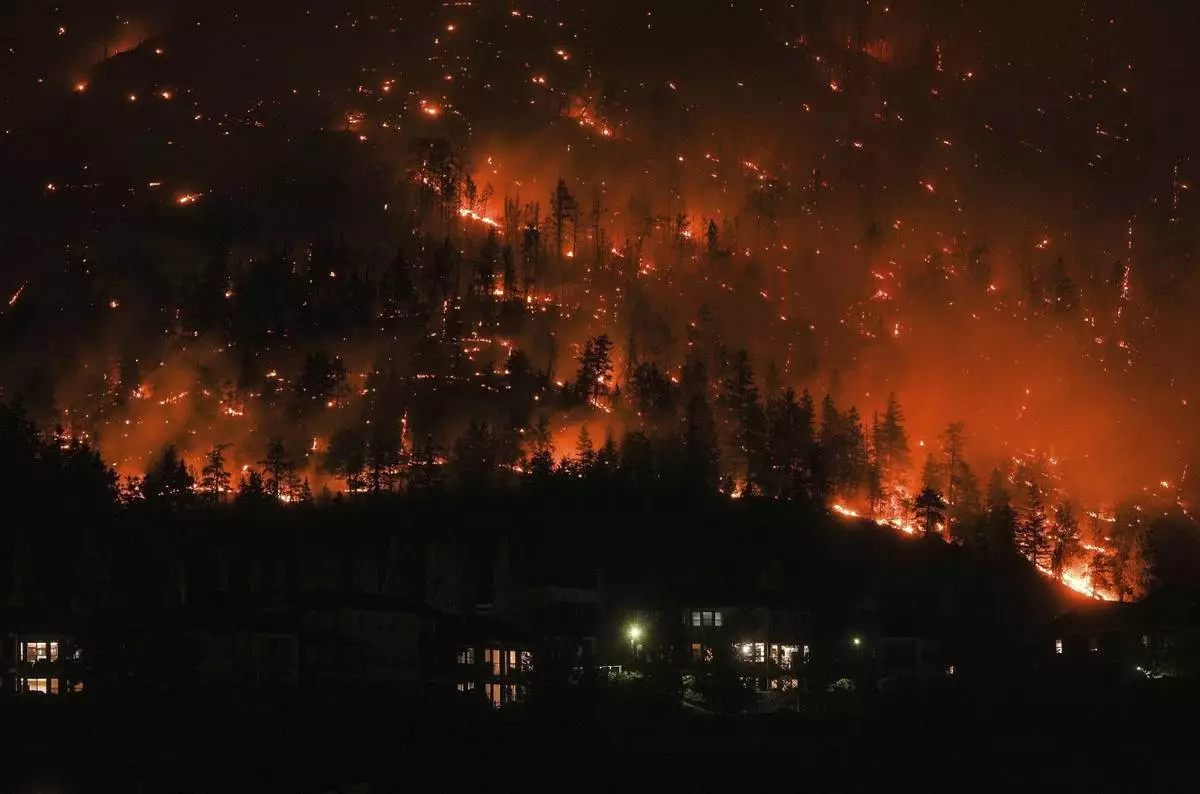
FILE - The McDougall Creek wildfire burns on the mountainside above houses in West Kelowna, British Columbia, Aug. 18, 2023. Catastrophic Canadian warming-fueled wildfires last year pumped more heat-trapping carbon dioxide into the air than India did by burning fossil fuels, new research found. (Darryl Dyck/The Canadian Press via AP, File)
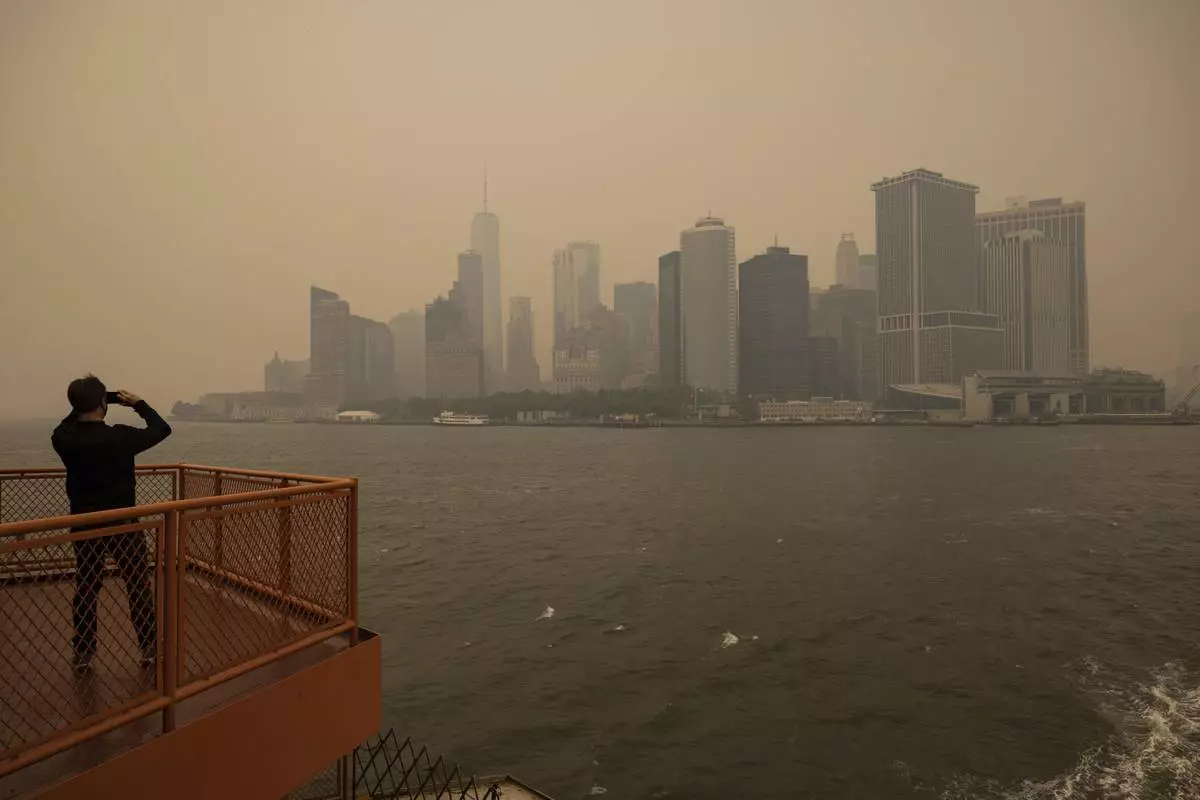
FILE - New York City is visible in a haze-filled sky due to wildfires in Canada, photographed from the Staten Island Ferry, June 7, 2023, in New York. Catastrophic Canadian warming-fueled wildfires last year pumped more heat-trapping carbon dioxide into the air than India did by burning fossil fuels, new research found. (AP Photo/Yuki Iwamura, File)
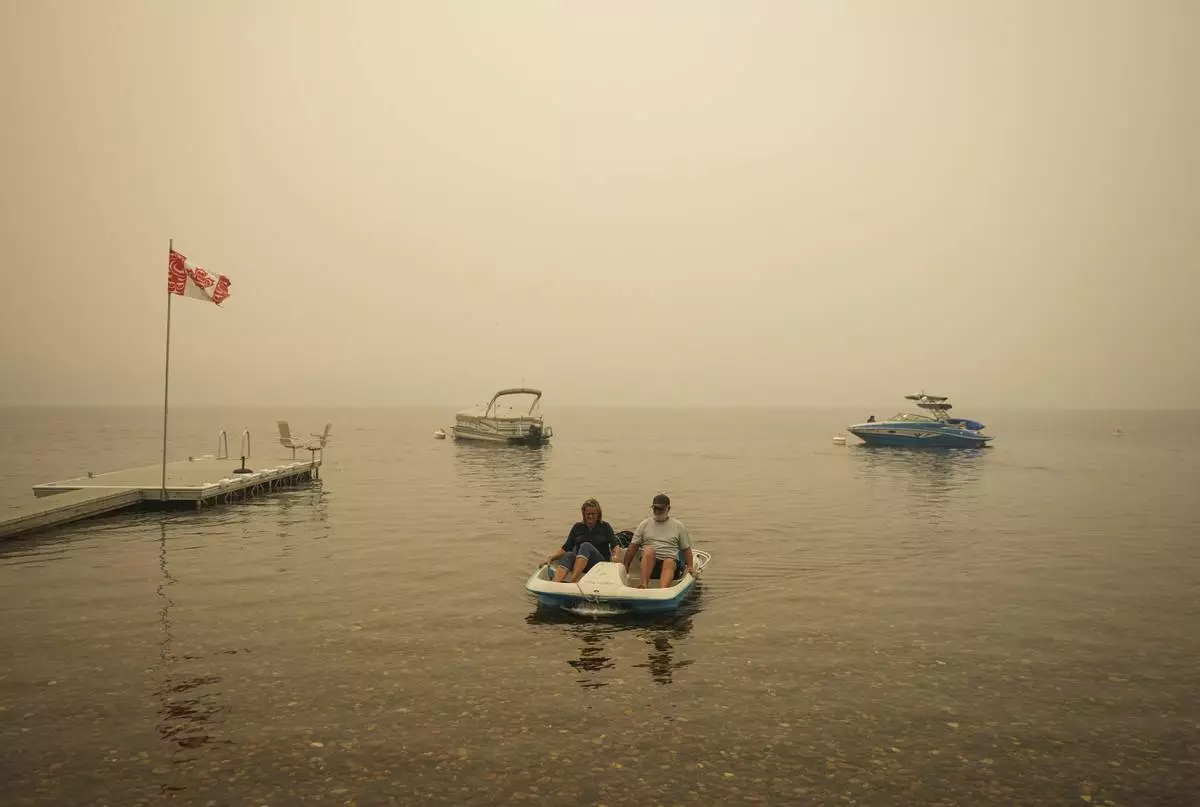
FILE - Smoke fills the air as Pat Manzuik and his wife Trevor use a paddleboat to get to shore after being given a boat ride by good samaritan Christy Dewalt, back right, back to their home they were evacuated from due to the Lower East Adams Lake wildfire, in Scotch Creek, Canada, Aug. 20, 2023. Catastrophic Canadian warming-fueled wildfires last year pumped more heat-trapping carbon dioxide into the air than India did by burning fossil fuels, new research found. (Darryl Dyck/The Canadian Press via AP, File)
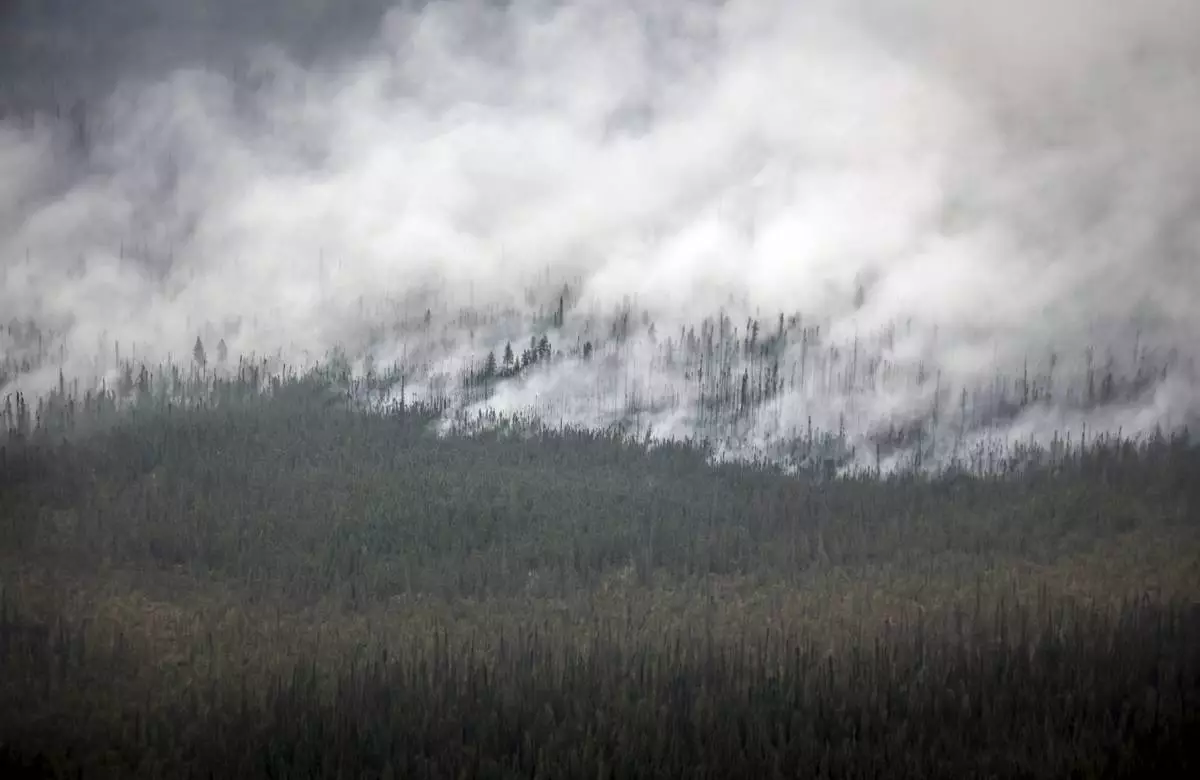
FILE - A wildfire burns south of Enterprise, Northwest Territories, Aug. 17, 2023. Catastrophic Canadian warming-fueled wildfires last year pumped more heat-trapping carbon dioxide into the air than India did by burning fossil fuels, new research found. (Jeff McIntosh/The Canadian Press via AP, File)
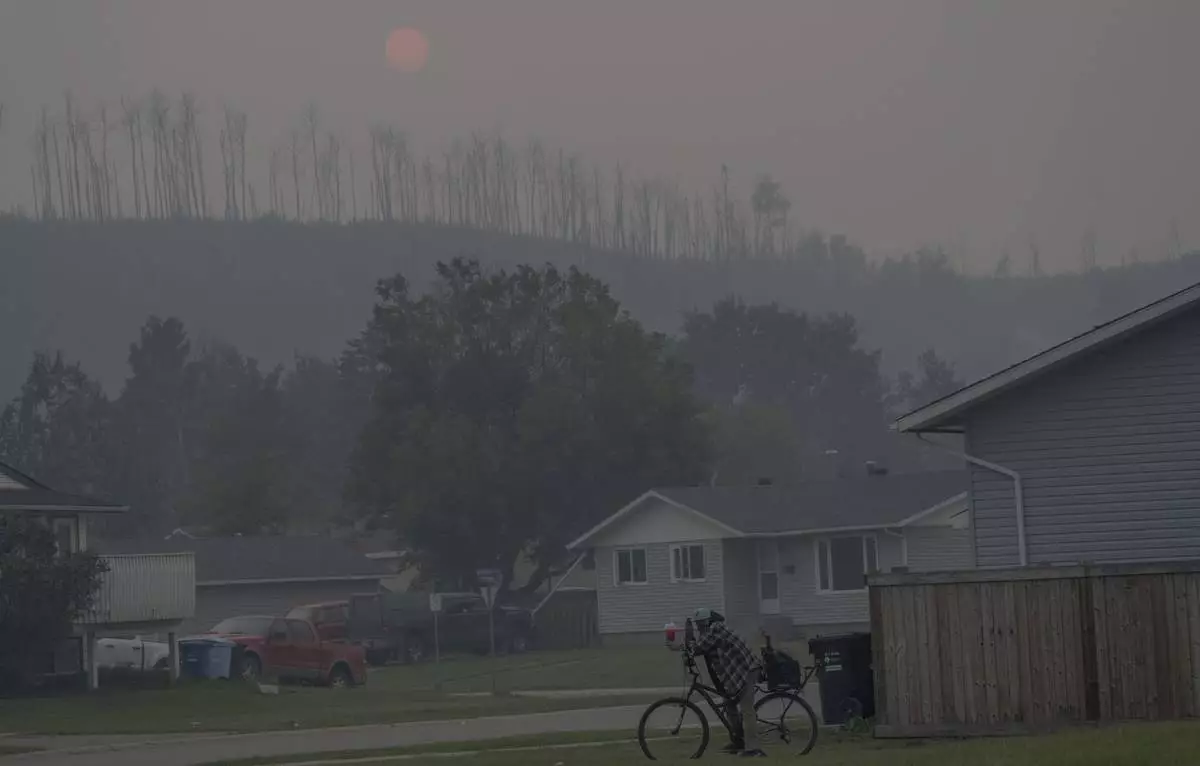
FILE - A person rides a bicycle on a smokey day due to wildfires in Fort McMurray, Canada, Sep. 2, 2023. Catastrophic Canadian warming-fueled wildfires last year pumped more heat-trapping carbon dioxide into the air than India did by burning fossil fuels, new research found. (AP Photo/Victor R. Caivano, File)
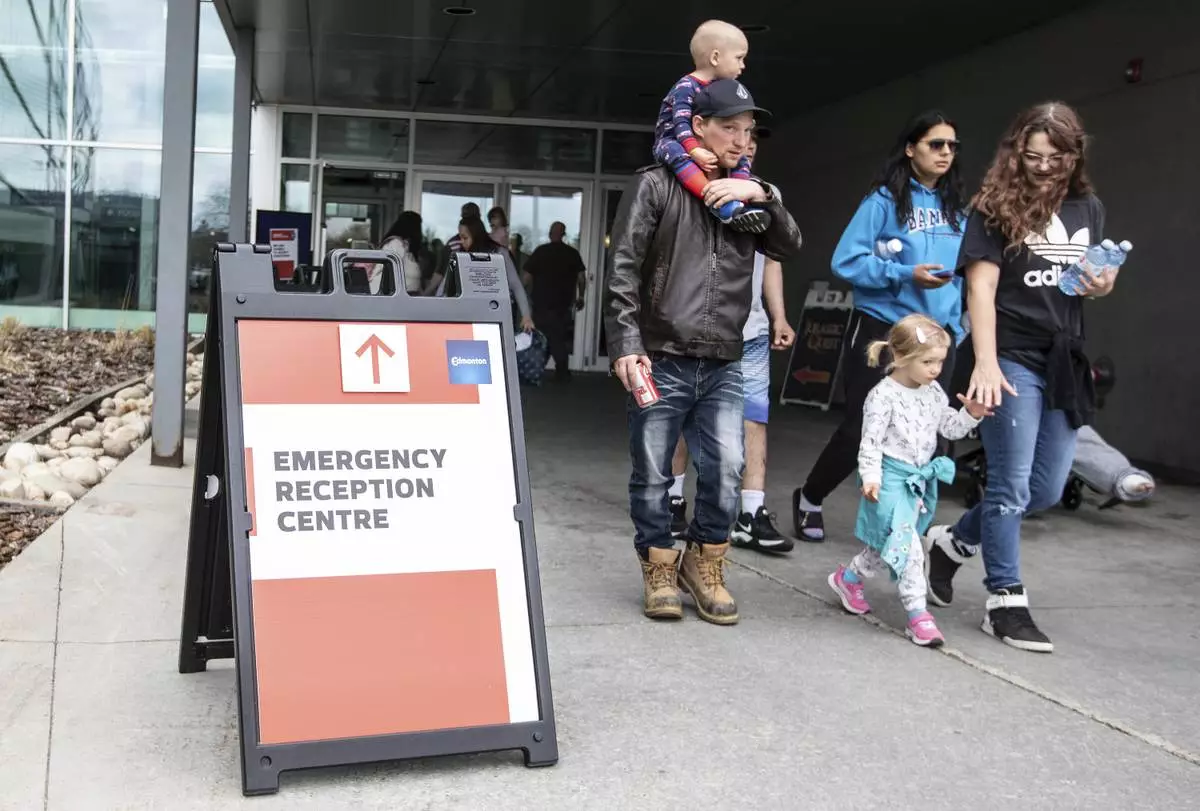
FILE - Wildfire evacuees get supplies and get checked in at the evacuation center in Edmonton, Alberta, May 7, 2023. Catastrophic Canadian warming-fueled wildfires last year pumped more heat-trapping carbon dioxide into the air than India did by burning fossil fuels, new research found. (Jason Franson/The Canadian Press via AP, File)
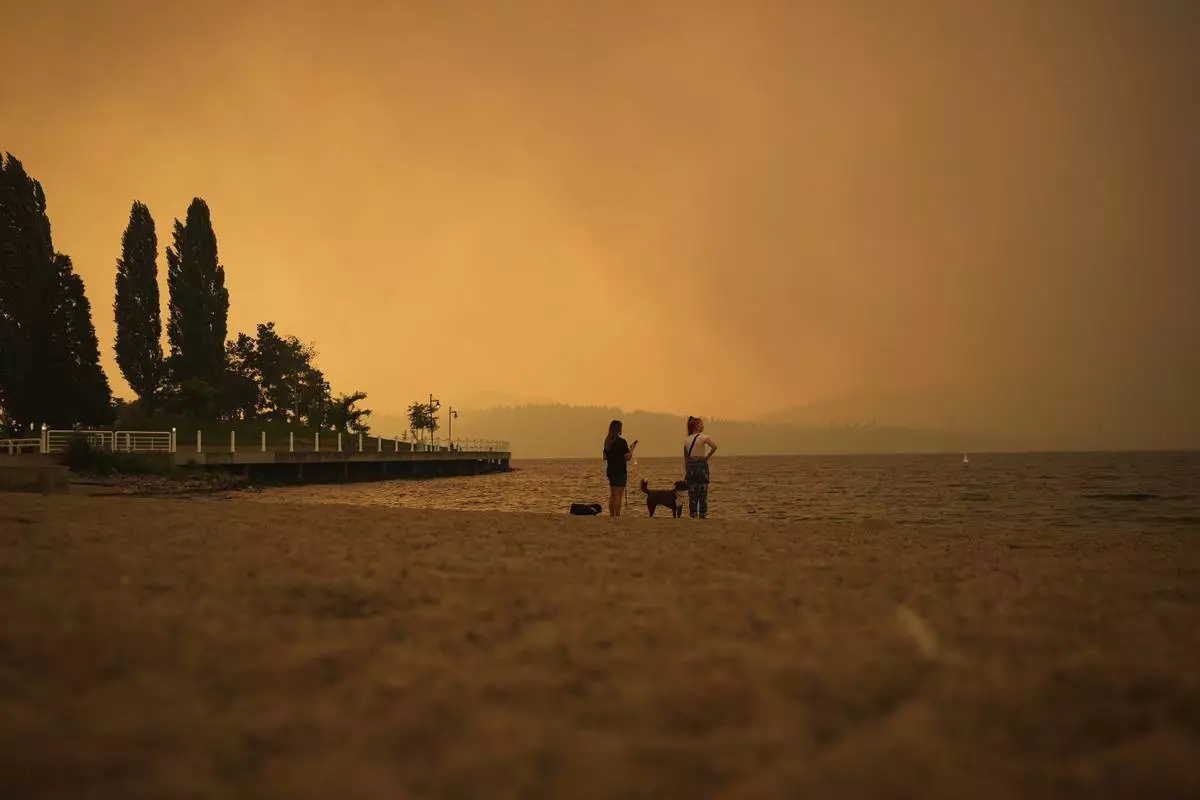
FILE - Smoke from the McDougall Creek wildfire fills the air as people take in the view of Okanagan Lake from Tugboat Beach, in Kelowna, British Columbia, Aug. 18, 2023. Catastrophic Canadian warming-fueled wildfires last year pumped more heat-trapping carbon dioxide into the air than India did by burning fossil fuels, new research found. (Darryl Dyck/The Canadian Press via AP, File)


